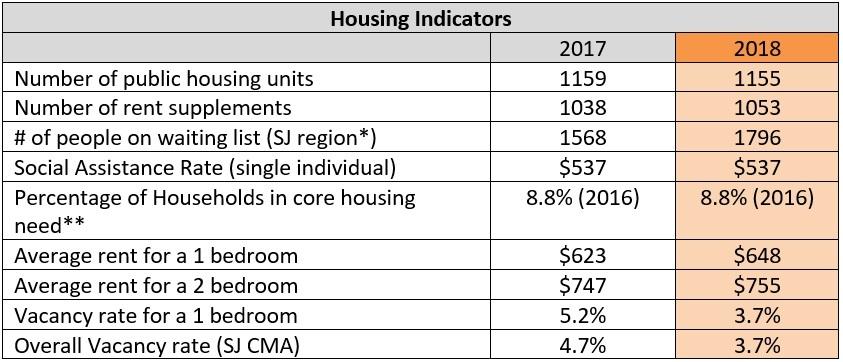
24 minute read
Shelter Statistics
ShelterStatistics
There was a 17percent increase in the number of individuals who used an emergency shelter in 2018. A total of 41 7 unique individuals were recorded in 201 8, compared to 356 in 201 7. This increase is in line with a developing and concerning trend over the past several years, highlighted in the graph below. The surge in shelter use was evident in both our men's and women's shelters, with each tracking their highest numbers ever. Coverdale, Saint John's women's emergency shelter, admitted a total of 1 07 women - a 1 5 percent increase over 201 7. Outflow, the men's shelter, saw an 1 8 percent increase over last year, with 31 0 men. A breakdown of the individual shelters' statistics is found on the following page.

Not surprisingly, the increase in individuals corresponded to a spike in occupancy rates as well. Representing the ratio of beds occupied over the year versus the total number of beds in the shelters, this number essentially tells us how full the shelters were over the course of the year. In 201 8, the shelters had a combined occupancy rate of 1 07 percent - a 21 percent increase over 201 7. This clearly demonstrates the considerable stress that shelters are experiencing. A greater than 1 00 percent occupancy rate also means the inevitability of turn-aways. However, occupancy rate, while a valuable indicator, does not tell the whole story. Anecdotally, shelters have also experienced a dramatic increase in complex needs among their clients, particularly mental health and substance use issues. As these issues increase, the burden on shelters, which are typically not equipped with mental health professionals or addictions specialists, only becomes exacerbated. This context is not evident in the shelter data presented here. However, more on addictions and mental health will be covered later in the report.
Saint John's men's shelter is operated by Outflow Ministry. In 201 8 Outflow had a 20 bed capacity with an additional 1 0 overflow cots (allowing for a greater than 1 00 percent bed occupancy, reflected above). Since 201 5 Outflow has seen a consistent increase in the number of men who use the shelter. It has also seen a corresponding increase in occupancy rate, with a staggering 1 28% in 201 8. Although there had been a modest decrease in the average length of stay in 201 6 and 201 7 (an encouraging sign), we saw a slight increase in 201 8, with men staying an average of 30 nights in the shelter. Without an emergency shelter for youth in the area we continue to see a high number of homeless individuals aged 24 or younger accessing the adult shelter, with a total of 44 staying at Outflow in 201 8.



Coverdale Centre for Women is Saint John's emergency women's shelter. The shelter has a 1 0 bed capacity and saw a 64.6% occupancy rate for 201 8. While this is much lower than the 1 28% occupancy rate at Outflow, it is important to note that homelessness looks much different for women than for men, and that women experience higher rates of hidden homelessness (as do youth). Therefore, while shelter statistics are an important part of the story, they aren't always indicative of how many women are in fact experiencing homelessness. In addition to serving more women in 201 8 than ever before, Coverdale saw an increase in the length of stay per client and continued to see a high percentage of youth accessing the shelter.
Point-in-Time Count
On March 1 5th, 201 8, Saint John took part in the second nationally coordinated Point-in-Time Count under the Government of Canada?s Homelessness Partnering Strategy (HPS). The first count, conducted in 201 6, included 32 cities. In 201 8, more than 60 communities took part. A PiT Count provides a community with a snapshot of homelessness over a 24-hour period. As a method for data collection, a PiT Count is particularly helpful in estimating the minimum number of people experiencing homelessness in emergency shelters, transitional housing, and unsheltered locations. However, more than capturing that number, the Count also includes a survey component. This survey allows communities to collect valuable information on those who are experiencing homelessness, including demographic information and service needs. When done repeatedly, over a number of years, a PiT Count can help communities evaluate their progress in reducing homelessness and track changes in the homeless population. When considered alongside other measurement tools such as local progress reports (like this one) and shelter statistics, the findings of a PiT Count can help to provide a better understanding of a community's homeless population. Below are a few key findings from the 201 8 PiT Count.
16% of respondents identified as LGBTQ2S+
Members of the LGBTQ2S+ community are understood to be at an increased risk of facing homelessness. However, because we do not gather statistics on sexual orientation in the general population, this is difficult to confirm. At the same time, given that there are no specialized LGBTQ2S+ shelter options in New Brunswick, and very few specialized programs from which to gather data, our local figure of 1 6% could very well be conservative.
Mental health & substance use were the 2 most commonly identified health issues identified by respondents
Mental Health and/or substance use disorder is a commonly cited reason for people's housing loss, and typically homelessness only further complicates an individual's road to recovery. 48% of those who responded said they were currently experiencing challenges with their mental health and 31 % were suffering from an active addiction. These findings point to the importance of programs that can quickly move homeless people into permanent, affordable, and adequate housing while providing them with the necessary supports to achieve stability in both their housing and quality of life.
Indigenous peoples are significantly over-represented in homelessness
Indigenous peoples continue to be disproportionately affected by homelessness. While 4 percent of New Brunswickers identified as having indigenous identity in the 201 6 census, 25% of individuals surveyed in the 201 8 PiT Count reported indigenous identity or ancestry. These findings are consistent with national trends and are a startling indicator of overrepresentation.

Housing Programs
Saint John has a number of shelters and other homeless-specific service providers that offer a vital service for individuals experiencing homelessness.However, the intention is always to allow individuals to move along the housing continuum and find safe, secure, affordable housing. To help in this process, Saint John has several housing programs, funded through the federal and provincial governments and delivered by non-profit agencies. The programs highlighted here: Housing First and Organized Departures (ODP), operated by Housing Alternatives Inc., target specific populations with complex needs, all of whom are homeless or at imminent risk of homelessness. These are direct housing programs that focus on affordability and stable tenancy and operate according to a Housing First principle: immediate access to housing without readiness conditions (e.g., sobriety). Through these programs, a total of 45 individuals were housed in 201 8 - just two fewer than the previous year. Stability rates (i.e., the portion of clients who are able to retain their housing after a certain period of time) continue to be very high, speaking to the overall efficacy of these programs. It is important to note that although these are the largest housing programs in the city, there are other NGO-operated programs as well. Additionally, many individuals who lack safe, affordable housing find placements through New Brunswick Social Development. While those numbers are not captured here, 201 8 was a landmark year for bringing these players together and working in a coordinated fashion (a topic discussed more on the following pages). As this coordination increases and we focus on consistent cross-sectoral collection of data, our housing numbers will become more complete and present a more full picture of the "outflow" from our homeless-serving system.
Housing First & Organized Departures Moves
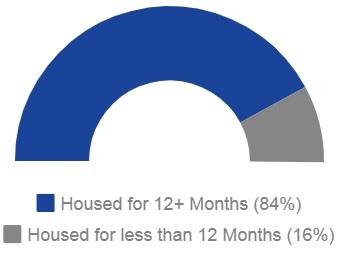

Historically, the ratio of male to female moves has been almost exactly 50:50. Having slightly higher numbers of male moves in 201 8 might speak to the fact that the men?s shelter was over capacity for much of the year.
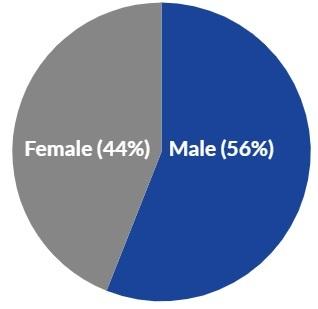
Stability rates for each program continue to be well above what would typically be expected from these types of programs. According to best practices, about 75-80% of moderate acuity clients (those supported by ODP) would be expected to be stable after one year. For high acuity clients (those supported through the Housing First program) the expectation would be closer to 70-75%. The 84% stability rate of Housing Alternative's clients after 1 2 months demonstrates the effectiveness of these programs.
Coordinating OurApproach to Homelessness
As already mentioned, Saint John's housing programs have housed more people over the past two years than ever before. Not only that, but stability rates for these clients have been higher than expected. These are successful programs, meeting or exceeding their targets. At the same time, however, our emergency shelters have been at or over capacity for much of that time. This means that although progress has been made in housing individuals, it hasn't corresponded to any significant progress in reducing homelessness in Saint John. Increasingly, communities are understanding that in order to achieve this reduction, a coordinated response is needed. Like many complex social issues, homelessness is touched by a number of different systems: Health, Justice, Education, Social Development, and the non-profit sector, to name just a few. The complexity of these systems on their own is one thing, but navigating all of them at once in order to access services and find housing can be a frustrating and difficult task. Luckily, there are models that have shown incredible promise in addressing these challenges and ending chronic homelessness. These models are known as Coordinated Access Systems (CAS). A Coordinated Access System is a homeless-serving system in which all homeless-serving agencies, as well as government and public systems such as those mentioned above, are all communicating, using common forms and assessments, and actively referring identified homeless individuals to appropriate resources. Implementing this type of system, while a good deal of work, is now seen as an essential component of ending homelessness.
Helping Saint John along this path is Built For Zero Canada (BFZ-C): an ambitious national change effort helping a core group of leading communities end chronic homelessness in Canada. As a member of Built for Zero, Saint John is committed to developing a better understanding of our homeless population through the use of a By-Name List (see page 1 5 for more details) and allowing data to inform and drive our actions. BFZ-C emerged out of the 20K Homes Campaign, of which Saint John was also a member. In early 201 9, the 20K Homes Campaign surpassed its goal of housing 20,000 of Canada's most vulnerable homeless people and turned its attention to ending chronic homelessness in Canada. BarrierBusting Bash
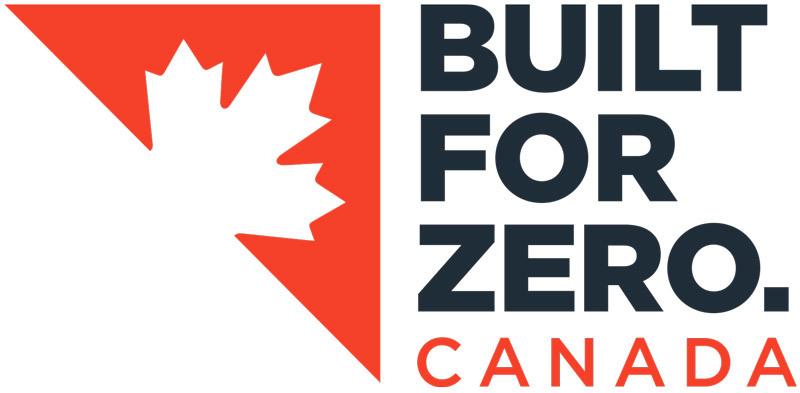
Early in 201 8 the Community Council on Homelessness began planning an event that would bring together multiple sectors to discuss barriers that individuals face in moving from homelessness to housing. Dubbed a "barrier busting bash", the event was seen as a way to not only address significant barriers to housing individuals, but also identify the inherent issues with the current silo-structure of the homeless-serving system. By doing so, it would serve as a jumping off point for conversations around Coordinated Access in Saint John.
In order to identify barriers, surveys were distributed to homeless-specific agencies and focus groups were held with individuals with lived experience. Certain barriers that were identified were specific policies, such as the Household Income Policy, which makes it difficult for individuals on Social Assistance to share accommodations while maintaining separate cheques. Other barriers were were more broad, such as the stigma associated with mental health issues and substance use disorder.
On the day of the event, each identified barrier was contained within a journey mapping exercise. In partnership with the Canadian Observatory on Homelessness (COH), a small working group of the CCH developed three different profiles and scripts for service providers (e.g., social assistance, NB Housing, the emergency shelters, Service NB, etc). Each participant was assigned one of these profiles and had to navigate that individual?s journey through homelessness. Once the exercise was complete, groups discussed the types of barriers that they had encountered and what the reason was for that particular barrier. Many common themes emerged, including: a lack of communication between service providers (including a lack of understanding of other service providers' policies or procedures) and the need for individuals to bounce from one agency to another (potentially over an extended period of time) before securing the help they need. These issues are not unique to Saint John and are they types of problems that are addressed by implementing a Coordinated Access System.
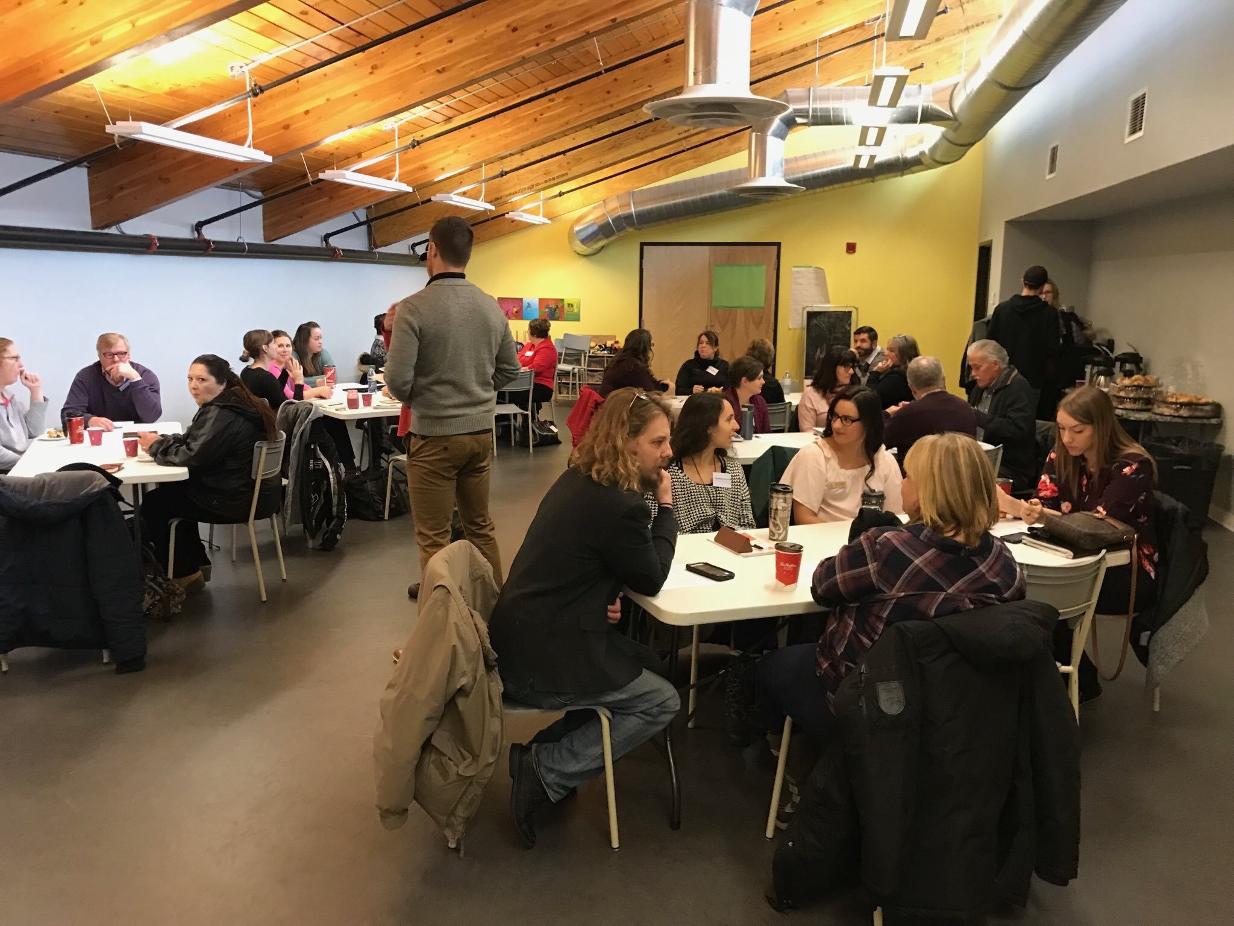
Representatives from a variety of sectors gather at the Nick Nicolle Centre for the Barrier Busting Bash
Saint John's Housing Blitz
The Fall of 201 8 brought with it increasing concern among front-line workers in Saint John?s homeless-serving sector. Not only were emergency shelters reporting elevated occupancy rates (often exceeding capacity), service providers in the Waterloo Village were also noting an increase in rough sleeping. Outflow, with a maximum capacity of 30 beds, was forced to turn away 34 individuals in the month of November as a result of being overcapacity. At the same time, temperatures were beginning to drop and a response to the crisis was needed. On November 20th, 201 8, a community meeting was held to determine what that response should be.
Out of the Cold Shelter?
One common response to this type of scenario is the creation of additional, temporary shelters. These Out of the Cold Shelters are often crucial in filling a gap ? providing additional warmth and shelter during cold months. However, while they are often necessary, they are also expensive to operate, unstable, and do not address the structural or situational issues that lead to homelessness in the first place. Considering this, the community opted to take a different approach. As with opening a temporary shelter, the aim would still be to increase the availability of shelter beds. However, the community agreed to do this by housing people. A request was made to New Brunswick Social Development for 1 5 rent supplements as well as funding to support a number of moves from the shelters into permanent housing. The funding was approved.
Creating a By Name List
In order to determine which individuals would get a rent supplement, the community adopted an emerging best practice in the homelessness sector: the creation of a By Name List (BNL). While the shelters and Fresh Start began to do intakes and referrals, backbone support was provided by the Human Development Council to begin building and populating the BNL. Within a month, more than 60 individuals had been added to the list. When adding someone to the BNL we collect not only their name but a variety of information (current living situation, age, how long they?ve been homeless, if they are a member of a priority population, etc). All of this information helps to prioritize people based on their level of need and vulnerability. Beginning in December, a Housing Blitz Committee was formed and would meet on a weekly basis to review the BNL and connect individuals to the 1 5 rent supplements at our disposal. Throughout this project (from December 201 8 ? April 201 9), more than 20 people were housed. The diagram below provides more details on the process of adding individuals to the BNL and prioritizing them for housing. This process - and the community's use of a BNL - will continue and expand as we move toward a Coordinated Access System.
A By-Name List (BNL) is a real-time list of all people experiencing homelessness in your community. It includes a robust set of points that support coordinated acces W h a t i s a B y N a m e L i s t ? data s and prioritization at a household level and an understanding of homeless inflow and outflow at a system level. This real-time actionable data supports triage to services, system performance evaluation and advocacy (for the policies and resources necessary to end homelessness). BNLs have quickly become a best practice for communities working to end homelessness.

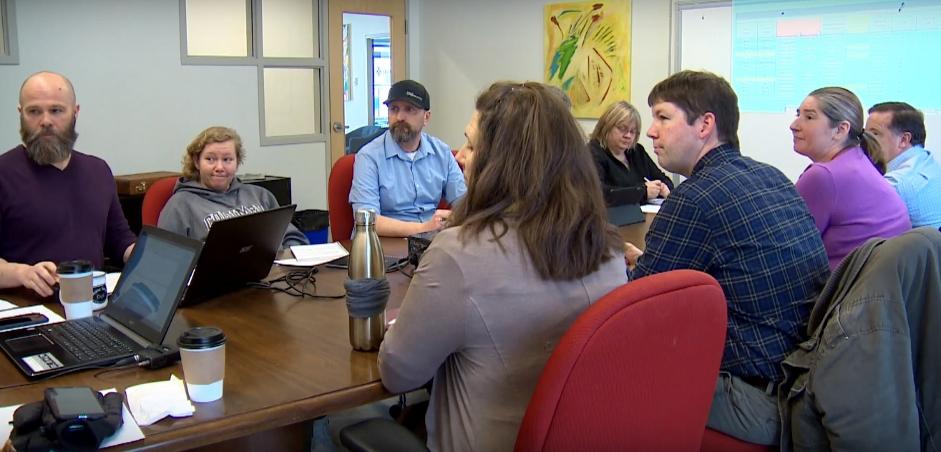
Members of the Housing Blitz Committee meet at the Social Enterprise Hub
Harm Reduction
As highlighted in our 201 7 Progress Report* , a number of agencies and programs in Saint John operate according to a principle of harm reduction. This essential evidence-based approach aims to reduce the adverse health, social and economic consequences of substance use without requiring abstinence. At its core, harm reduction acknowledges that with proper supports in place, risk can be mitigated. Increasingly, this approach is becoming more relevant in the homeless serving sector, as the opioid crisis continues to claim the lives of Canadians, including those in New Brunswick. More than 1 0,300 lives were lost between 201 6 and 201 8 due to apparent opioid related overdose across the country. In New Brunswick, approximately 1 9 individuals died from an apparent opioid related incident between January and September of 201 8 (Statistics Canada, 201 9).
In 201 8, Saint John hosted it's first Harm Reduction Symposium: Sounding the Alarm. Based on its success, as second Symposium was held in early 201 9, focusing on awareness, education and potential strategies to address both urban and rural concerns regarding mental health and substance use challenges facing individuals and families in New Brunswick. This section highlights some of the local statistics, agencies, and initiatives related to harm reduction in Saint John.
I n t e r e s t e d i n t a k i n g a c t i o n ?
The Harm Reduction Nurses Association is open to any service provider and students interested in harm reduction initiatives. Find out more at www.hrna-aiirm.ca
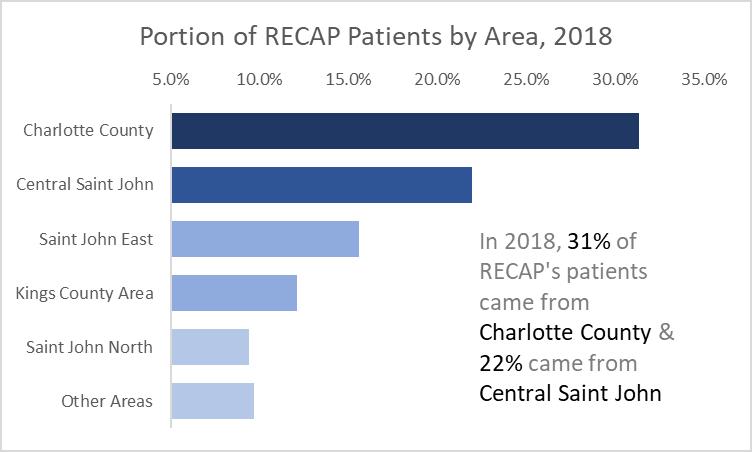


RECAP (Research, Education, Clinical Care for at Risk Populations) is a community access clinic in Waterloo village rooted in the care of patients with Hepatitis C. Using a harm reduction approach, RECAP is focused on lessening the negative consequences of problematic substance use through individualized and family holistic care including opiate substitution therapy (OST), primary care, psychology, specialist care in infectious diseases, internal medicine and pediatrics. Since 201 4, 380 people have consented to being added to RECAP's database, 1 05 of those in 201 7/201 8.
Avenue B Harm Reduction Inc. (formerly known as AIDS Saint John) offers a Harm Reduction based Needle Distribution Program in the greater Saint John area and beyond. They provide support services for people who use drugs and who are at risk for HIV, hepatitis C, and other blood borne or sexually transmitted infections. Over the past several years, Avenue B had seen a fairly dramatic increase in needle distribution, as demonstrated in the chart below. They have also seen a consistent increase in the number of unique clients served.
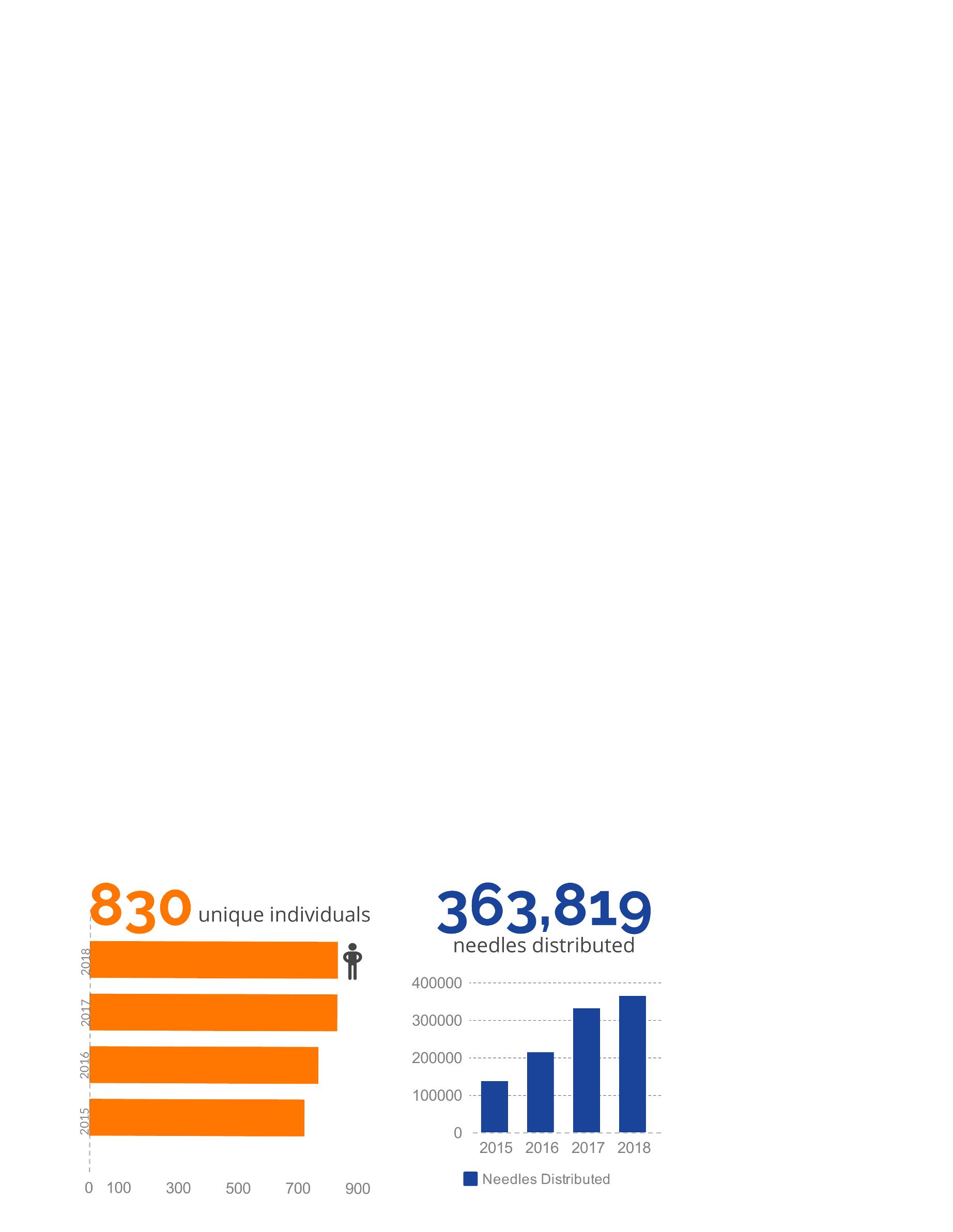


Peer support describes programs where individuals with lived experience of issues such as mental il homelessness pro dealing with similar D i d y o u k n o w ? lnes vide issu s, addicti support es. By lis on, an to oth tening d ers and offering guidance based on their own experiences, peers are uniquely equipped to support others in a similar situation. Increasingly, this lived experience component is bring recognized as the key to a meaningful reduction in homelessness. Peer Health Navigator Project Currently, Avenue B is conducting a pilot project aimed at training 1 0 peers from the drug using community to become trained peer health navigators (PHNs). It is intended that these PHNs will increase the capacity and access to testing, health care and other community services for people who use drugs. Peer Health Navigation is a person-centred approach that enables people to guide, connect, refer and educate peers through the many systems of care. The goals of peer health navigation are to support people in their goals, build capacity among their peers, manage their own health care with the overall goal of improving the overall health and wellness of people who use drugs.
AgencyUpdates
Outflow Ministry
Outflow has been vocal about the goal for our men?s emergency shelter since its inception: We want every man who comes to our door to have a safe and affordable place to live. Without question, realizing this goal will look different depending on who we are serving, whether that means joining the Housing First or Rapid Rehousing program, moving into a special care home, or even finding a place of his own without needing any additional support. In short, we do not want anyone to arrive at the shelter and feel like he is making his last stop and we are excited every time that one of the men from our shelter is able to find stable housing. Housing is a crucial next step for the men we meet at the shelter. Outflow is also excited about a new path out of homelessness that we are developing. In some cases, we have been able to successfully combine our housing program and our employment program. This combination allows Outflow to help some of our clients go even further on their journey out of poverty, as sort of a next step after the next step. We have seen three benefits to integrating these two programs. First, we are able to see the men we work with on a regular basis. This means we can more quickly identify potential problems the men are having before the problems result in an eviction. Second, we are able to provide stability in a positive environment to the men in both programs, which helps them to solidify their housing and transition into regular routines. Third, we are able to help the men in both programs become less reliant on subsidies and other programs to maintain their housing.
Fresh Start Services for Women
-Anthony Dickinson Outflow Ministry
Fresh Start Services for Women continues to work to meet the growing need for housing in Greater Saint John. With 3 full time staff and dedicated volunteers, 201 8 saw us provide direct and indirect services to 1 459 clients. As part of our growth, staff began in the fall to put an emphasis on homeless prevention; working directly with landlords to stop evictions and resolve tenant challenges to ensure women and their families remained housed. In three months, due to our focus on reaching out to landlords before or when evictions were issued, we were able to prevent 38 clients from losing their housing. Rising rates of homelessness and the challenges to find affordable housing have led us to need to focus on prevention; taking many forms ? offering services to landlords such as lease agreements, facilitating tenant meetings to resolve conflicts, or working as a mediator for landlord/tenant discussions. Moving forward into 201 9, Fresh Start is working towards continuing to focus on homelessness prevention.
- Melanie Vautour Fresh Start Services for Women
Coverdale Centre for Women
Coverdale operates with a strong belief in the ability of women to overcome every hurdle, including stepping up out of poverty. We have seen women gain confidence and climb against every odd, solidifying our desire and ambition to help each woman work toward independence and an easier life. Some of the hurdles women who access Coverdale?s services face are barriers to employment. These barriers include: criminal records, lack of employment history, lack of resume writing skills, inexperience with office interpersonal skills, lack of boundaries, and a lack of hard skills that employers would find valuable. We work to address these gaps and more with a Transition to Work program that teaches employment skills as well as looking at gender-centred personal care skills each week for 6 weeks. This program is available to our CRF clients. Another way that we aid women in gaining practical skills is to employ them. We hire women accessing our services to clean the Drop-In Centre. This helps them to gain proper cleaning skills, important workplace communication skills, a sense of responsibility, and an entry to add to their resume and a reference for their job search. The women we have hired for this role in the past have been guests at our Women?s Emergency Homeless Shelter or Hope Bridge Home, guests at our CRF, and women in the community who access the Drop-In Centre and programming. This past year, in collaboration with the John Howard Society, Coverdale secured a Cleaning Training Program contract with Corrections Services Canada for the women and men residing in our respective CRF?s. This position is a 1 0 week rotational term contract for each person employed, giving them valuable vocational training including certification with on the job training of cleaning services. It affords them, like our own cleaning contract, a resume entry and a reference. It also provides them with an opportunity to show growth in their life since incarceration. It aligns with both agencies desire and mission to support their clients in moving forward. We continue to look for positive ways to give women the aide they need to keep moving forward, always seeking the next step to improve their confidence, self-esteem and their living conditions to provide a better quality of life for themselves as well as their families.
- Mary Saulnier-Taylor Coverdale Centre for Women
Romero House
80,769 meals Established in 1 982, Romero House has seen a consistent level of need in the commu serv nity e s d ince it's opening. However, 201 8 was another record year for service use in a few categories. 82,339 meals were served in 201 8 - approximately 1 ,500 more than the previous year, and more than any year before that. Total membership for the clothing room at the end of 201 8 was 4,300 households with a total of 5,947 visits. Again, this represents more visits than ever before and is an addition of 273 households consisting of 340 adults and 229 children. Of those numbers, 841 consistently returned for help one or more times per month for the entire year.
- Evelyn McNulty Romero House
Safe Harbour House provides transitional programming support for homeless youth. The ultimate goal of the house is to provide residents with a supportive environment and offer them programming to help boost self-efficacy and equip them for independent living. To accomplish this goal, we rely on an client-centered approach in which residents are guided to develop a road map for their time with us. Such plans generally include components related to career guidance, life skills development, building supportive relationships, and healthy living. The length of each resident?s stay at Safe Harbour House can vary. We operate under a philosophy that values impact over strict time constraints. The duration of each resident?s stay is based on their needs, their level of readiness to transition to independent living, and their financial stability. Partners For Youth Inc re-opened Safe Harbour House in March 201 7 and since opening have observed and noted many successes, challenges, gaps and goals. Everyday provides an opportunity to (re)create individualized case plans/goals for marginalized youth. Residents have managed to complete high school, have been accepted into post-secondary education, have become employed, maintained sobriety, felt safe, had a stable home, obtained identification and earned a driver?s licence, improved their physical and mental health; practiced healthy relations with others in the home and added various life skills to their tool box. The project has been most successful for 26 New Brunswick youth who had no safe place to live while they tried to function normally.
- Alison White Safe Harbour House
References
CMHC. 201 8. Rental Market Report: Saint John CMA. 201 8 Common Front for Social Justice. 201 8. Let's Mend Our Social Safety Net: Social Assistance Information Document. http://www.frontnb.ca/userfiles/file/Information%20document%20(Edited)-%20(8).pdf Gaetz, Stephen, Erin Dej, Tim Richter, & Melanie Redman. 201 6. The State of Homelessness in Canada 201 6. Toronto: Canadian Observatory on Homelessness Press http://homelesshub.ca/sites/default/files/SOHC1 6_final_20Oct201 6.pdf Statistics Canada. 201 9. National report: Apparent opioid-related deaths in Canada. Ottawa. https://infobase.phac-aspc.gc.ca/datalab/national-surveillance-opioid-mortality.html
Prepared by Michael MacKenzie with the Human Development Council, a local social planning council that coordinates and promotes social development in Greater Saint John. Copies of the report are available from:
www.sjhdc.ca 1 39 Prince Edward St.
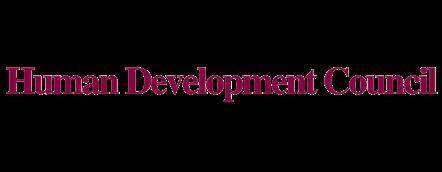
Saint John, NB Canada
E2E 3S3

506-634-1 673



